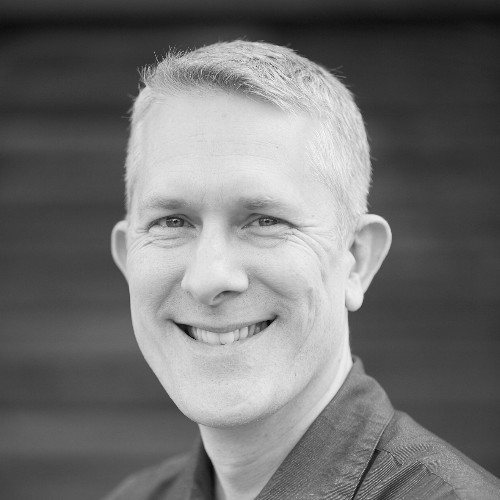Eric Fulmer
How do you describe DAM to others?
I define DAM as the retention, transformation and distribution of assets. Our company defined a new Marketing Technology category that we call Studio Production Management (SPM) to put a label on the unique set of capabilities related to brand content creation at scale.
We work with many brands to help them improve their DAM workflows and how they can tie into SPM. Examples of SPM capabilities include tracking of physical sample merchandise, planning and execution of content production work and automation of post-production workflows, including retouching.
What companies/organizations have you worked for? What was your role at each?
I spent about 20 years in various sales and marketing roles in the photo industry, with companies from Fuji and MAC Group to Phase One. My move to the technology team at CreativeDrive (formerly OneKreate) in 2012 opened my eyes to the unique problems of creating content at scale, as I worked with clients including Walmart, Petco and Under Armour. I was tasked with implementing our proprietary technology tools for managing multiple photo studio facilities serving many brand clients, and I became hooked on this unique market problem.
What’s the most important thing for someone new to DAM to understand?
DAM is far more complicated than it seems. We refer to the “onion layers” that are peeled back as you dive into this unique niche. There are so many variables, exceptions, and complex relationships between different production objects (campaigns, jobs/projects, requests, style guides, products, samples, groupings, talent, bookings, shoots, shot lists, shots, assets…). Nothing is simple, and every brand has its own unique data model, business rules and processes.
We approach DAM in the context of the particular focus that is our specialist interest, Studio Production Management (SPM). Similar to DAM, everything that initially looks simple about SPM is far more complicated than it seems. There are also processes at physical studios that must “mesh” with the unique brand requirements. Mix in many brands working with many studios, and you have a very complex terrain indeed.
What is your ongoing greatest challenge with DAM?
It’s the tendency for organizations to believe that DAM is a be-all, end-all solution for content creation. Despite that, DAM systems are primarily designed to manage final assets. Oftentimes we see organizations approve a DAM with the assumption that it will magically solve the ‘cradle-to-grave’ content lifecycle – which is usually false. The content creation process is distinct from DAM, PIM/PLM, and Project Management, but must integrate with those systems. This is why we work so hard to educate clients that Studio Production Management is a distinct ‘box’ in the MarTech stack, with little to no overlap with these other key MarTech Systems of Record.
What is your vision for DAM? What will it look like in 5 years?
I want to see a seamless integration between managing asset creation (SPM) and managing final assets (DAM), where all the contextual information related to the creation of content (campaign/project/job, intended usage, featured products, model information and usage rights, etc.) flows from the production process into DAM as metadata. This is all feasible today, and already working for many of our clients, but there are far too many brands with completely disconnected SPM/DAM workflows. I’m hopeful to see this change in the coming years.
What was your biggest mistake with regard to DAM?
In the beginning, I didn’t see all the complexities, dependencies and variables. I was a bit arrogant about being able to solve DAM with technology. It took years to grasp the intricacies of the full processes — and to recognize my own ignorance. Even after eight years of exclusively focusing on the DAM challenge, I learn new things every day and have to challenge my existing assumptions and conclusions.
The positive side of being overconfident and failing, are the lessons I learned: humility, patience, and empathy for the people that do this work every day.
What was your biggest success with regard to DAM?
It has been a challenge to identify clients that really understand how to collaborate together by seeing the bigger picture, by playing the long game of steady iteration toward better processes. Developing partnerships with large organizations including Gap Inc. and Urban Outfitters to find solutions together has been incredibly rewarding.
If you weren’t doing DAM as a career, what would you be doing?
I have no idea. I am addicted to this problem and I just can’t see myself doing anything else. I had a 25-year sales & marketing career prior to this that I enjoyed at the time, but I almost can’t recall what it’s like to sell someone else’s vision. Now that I have my own, a switch has flipped. There’s no going back and there’s so much exciting work ahead.
What more would you like to learn about DAM?
I learn something new every day. There’s so much more to learn. It’s really the beauty of Digital Asset Management and Studio Production Management — there’s always another layer of that onion to peel back. It keeps me guessing about what comes next, but there may never be a point of full knowledge. I love that about my work.
Eric Fulmer is Vice President of Operations for ShotFlow – https://www.shotflow.com/ You can also connect with Eric on LinkedIn – https://www.linkedin.com/in/fulmeric/
This interview was published in DAM News on 2nd June 2021. For more DAM News interviews, see the interviews index page.
Share this Article:

